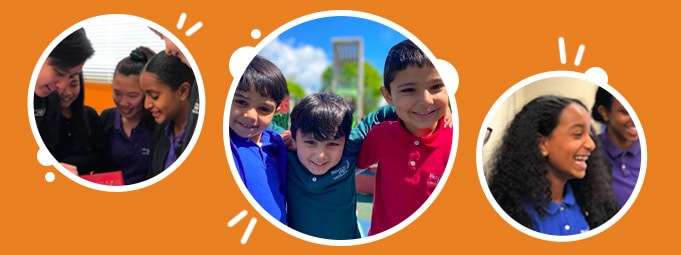
Getting a classroom full of children enthusiastic about learning and working hard is no easy feat. Without student motivation, even well-prepared and engaging lessons may not have the intended outcome. To help, we’ve created a list of five tips to help educators motivate students and push them to reach their goals.
To truly motivate students, you should get to know them so you can better understand your class and their needs. Learn more about what motivates them and what they struggle with. This will also help you develop tactics that will keep your students engaged. Not to mention, students are more motivated to participate in classes with teachers they know and like.
Remember, you are not befriending your students, as this will often lead to a lack of respect, which may cause you to lose your authority as a teacher. It’s possible for teachers to get to know their students on a personal level, all while maintaining a respectful and professional relationship. When learners are able to see their teacher as an actual person, they are more likely to take risks and ask critical questions needed for success.
Guidance is essential for keeping students on task, but giving students a sense of choice and control over what is happening in the classroom keeps them engaged. Giving control also allows for differentiated learning, which is often more important than the content itself as it offers a variety of learning styles.
This also enforces a student-centered learning approach, which focuses on creating a genuine connection with students, resulting in a more meaningful educational process.
Learning menus are a great way to keep students engaged by giving them a sense of control. This teaching method is almost like a food menu, but instead of meals students select and work on mixed activities and then report on their learning through reflection.
This style of learning includes learning intention, the “why” of learning, and focuses on success criteria. It also can connect multiple tasks that can focus on numerous educational standards. Tailor-made lessons for individual students can be timely, but there are softwares like Houghton Mifflin Harcourt’s Read 180 that uses algorithms to curate suggestions for each student.
Being clear about learning objectives and outcomes can prevent student frustration. Laying out clearly defined objectives, rules, and expectations at the start of lessons also gives students goals to work towards.
Considering the value of the objective or task from the student’s perspective can help clarify a lesson. According to Vanderbilt University, there are three crucial factors to consider in a lesson’s value.
Clear expectations and an easy-to-understand rubric can double the rate of learning. This will help students have a better chance of assessing their current performance and using feedback more accurately. If you’re not sure how to create your own rubric, here’s our blog on developing and using different grading approaches.
Encouragement is the best form of student motivation. When used effectively, praise can improve behavior and student attitudes about learning. The Institute of Education Sciences claims that recognition is one of the top five most effective practices in motivating students.
For example, students with anxiety may find motivation by knowing that their struggles are validated and that they can seek support from their teachers. As a school, discuss what resources you can provide to help support struggling students. Knowing that there are options available will help encourage students to seek the support they need to succeed. It will also prevent students from giving up if they feel overwhelmed by expectations.
A student might find it difficult to track their own progress, especially in a subject that is challenging for them. By tracking students’ progress, educators can show students where they’re improving and what they need to work on.
An excellent way to do this is through self-assessments. This can be easily done through a survey or poll, and can provide a framework for metacognition, and can help clarify, and prioritize a student’s learning. Tools such as Microsoft Forms and Microsoft Teams can support self-assessments and feedback.
In fact, Forms can help educators easily create surveys and polls as well as track and analyze data. Not only do they make it easy to understand the information, they also make information easily shareable, perfect for conversations with parents, administrators, and other educators.
At Renton Prep, we know that education is constantly changing, and what motivates children today is far different than ten years ago. With this knowledge, we have fostered an atmosphere where children explore their creativity and problem-solving skills, all while nurturing their God-given abilities.
We strive to support and guide our students as they continue to grow throughout their time here at Renton Prep. Contact us today to learn more about our curriculum and educational methods.